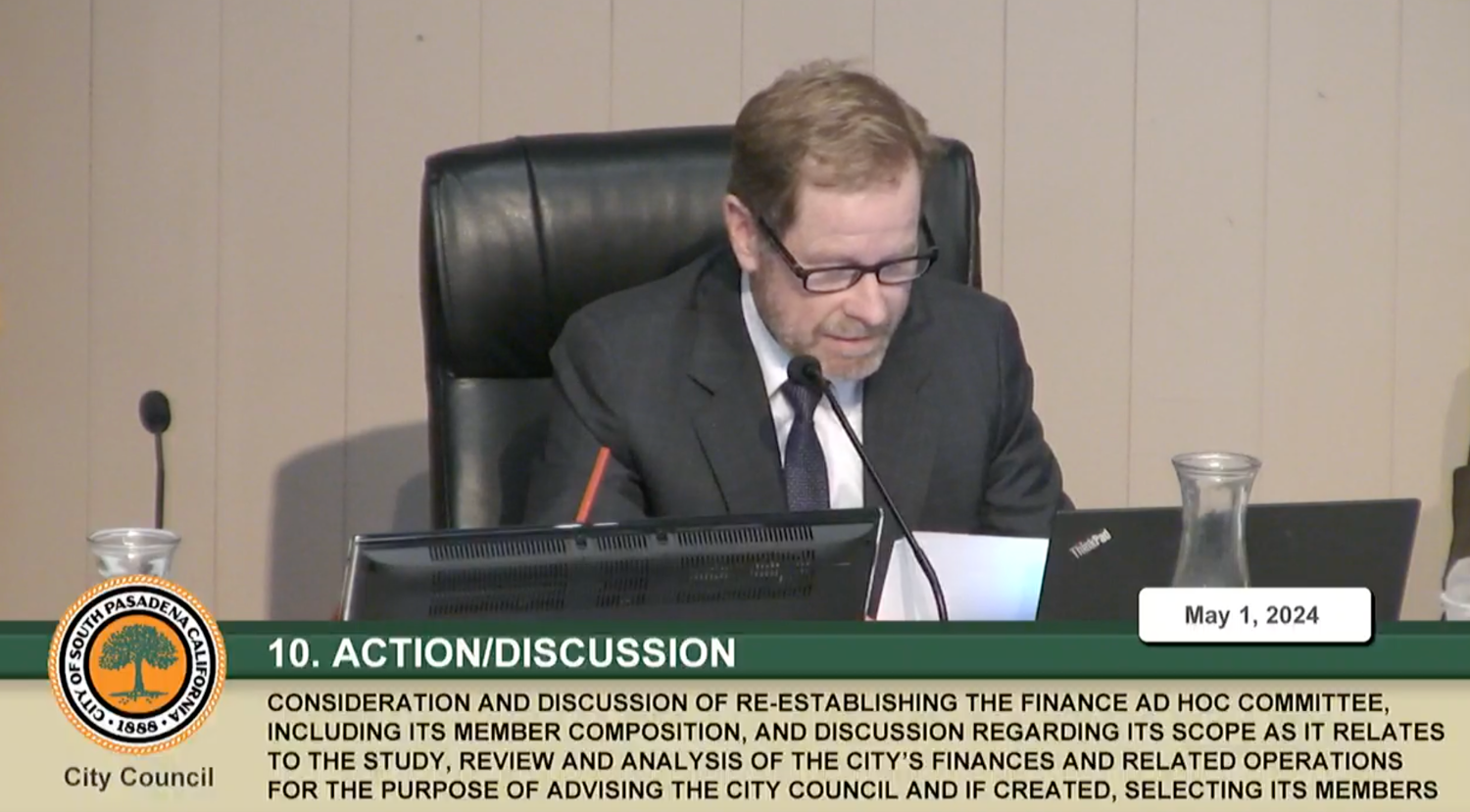Finance
When Kartik Aaryan shocked internet and revealed his mom controls his finances, gives him allowance

On Thursday, finance minister Nirmala Sitharaman will be presenting Budget 2024. Ahead of which, we take a look back at when actor Kartik Aaryan bamboozled the internet by opening up about how his mother Mala Tiwari handles his finances. During a 2023 interview with Film Companion, the actor had also said that he doesn’t know how much money he has in his bank account. Also read | Budget 2024: When Suniel Shetty raised concern about rising tomato prices
Kartik Aaryan on his mom not letting let him buy car
Kartik Aaryan also said that whenever he has to buy something, he must get his mother’s permission first. “My mother handles my money. I don’t know how much money there is in my account or if there is any money or not… I wanted to buy a car on my birthday, but mummy refused, saying that there is no money. She said maybe next year or sometime later, but, ‘Abhi nahi le sakte (You cannot buy right now)’. I have no option but to believe what my mother tells him, because I don’t even know where to check how much money I have, I don’t know kaunsa (which) account hai (it is).”
On why his mother gives him a monthly allowance
Kartik, who will be soon seen in the film Chandu Champion, and also has Aashiqui 3 in his kitty, further said, “She just doesn’t want me to get spoilt. She thinks I can still get spoilt. I have lived my life where I spent more than my earnings. So, I think she is used to that idea and she doesn’t like it. She has decided isko pocket money mein hi rakho, usme sudhra rahega (She gives me pocket money to keep me in check).”
Reacting to a video from his Film Companion interview, an Instagram user had said in 2023, “Another day of Indian men refusing to grow up!” One also wrote, “His wife will have lot of issues with the mother.” Another commented, “Good luck to his wife.” A comment also read, “Why do we promote such grown up kids?”
Entertainment! Entertainment! Entertainment! 🎞️🍿💃 Click to follow our Whatsapp Channel 📲 Your daily dose of gossip, films, shows, celebrities updates all in one place

Finance
City Council South Pasadena | Primuth Apologizes, Finance Ad Hoc Reauthorized | The South Pasadenan | South Pasadena News

In another dramatic reversal, the South Pasadena City Council last Wednesday unanimously voted to re-instate the financial advisory board it abruptly dissolved only six weeks earlier. The lead up to the vote featured an apology from Council Member Jon Primuth for comments he made about Sheila Rossi, Vice Chair of the newly reauthorized Finance Ad Hoc Committee (FAHC).
Despite impassioned pleas from a group of influential citizens, council members initially seemed poised to reject reinstatement. The fog over what drove the alarming deficit projections that prompted Council in February to create the FAHC was clearing; possible savings in the current fiscal budget that ends June 30 were emerging; and both Council and its standing Finance Commission had since approved the mid-year budget report they’d previously delayed in the wake of the deficit projections.
“Their work is done,” Council Member Jack Donovan said of the FAHC.
Council Member Michael Cacciotti said a renewed FAHC would constitute an unduly heavy demand and inefficient use of staff, particularly in light of the many recent and planned joint council- finance commission meetings. He rejected the mayor’s notion there is a “fiscal emergency” and other “sensationalized” descriptions of the budget, suggested the city spends too much on the finance commission now and blamed concerns over “chronic instability” in finance department staffing on “pressure and comments from community members creating an unwelcome and stressful employment environment.”
But then Primuth, who on March 20 cited Rossi’s “misrepresentations” as the reason for both his loss of confidence in and vote to kill the FAHC, read a long prepared statement. “People are worried the city is running at too much of a deficit. They’re concerned about the integrity of the city’s financial reporting. They are concerned about the anger with which some council members” spoke of the FAHC. “That would have been me.”
Although it was not his intent, Primuth said, “it appears my words had the impact of accusing her of intentionally misrepresenting. And for that I apologize.”
Starting with some “background,” Primuth then explained why he now felt the FAHC should be re-instated. Since the vote to disband it, Finance Director John Downs apologized for the “financial reporting discrepancies that had caused so much turmoil.” One citizen told Primuth he’d counted six times incorrect reports had been pushed out. This caused “a collapse of confidence in some people in the city’s own numbers.”
Now the department is producing reliable monthly reports, though “more improvement is needed” Primuth continued. The alarming projections were based on an inflated baseline. Council and the Finance Commission have taken steps to ensure more reliable projections, given staff direction to update policies, and discerned long- and short-term cost saving–without major staff cuts–by recognizing a slowdown in capital improvement spending, savings from budgeted-but-unfilled staff positions, and that some large costs–such as Caltrans housing, legal expenses, temporary contract staffing, and Housing Element development–are one-time or diminishing expenses.
The city’s financial troubles must be addressed in a way that is “transparent, collaborative and respectful,” Primuth concluded. The FAHC, with its original four members, should now be charged with making recommendations on how the city can improve its financial reporting, precisely because they have experienced what things are like without it. Therefore “they should be the ones to lead the way. That will improve public confidence.”
“There’s been a kerfuffle over the last couple months,” summarized Council Member Janet Braun, who along with Mayor Evelyn Zneimer and citizens Peter Giulioni and Sheila Rossi made up the FAHC. But it’s been good, because it brought out issues–“where things stand, what needs to be looked at.” Sometime, Braun said, “you need a little bit of kerfuffle to get to the bottom line.”
She said the FAHC should be reauthorized to focus on actual financial figures and the protocols for their presentation, rather than be left trying to reconcile budget figures with unreliable or unavailable interim actuals. The FAHC could also help with prioritization of the capital improvement program (CIP).
Mayor Zneimer agreed, adding the FAHC could address the “inadequacies” of the city’s Springbrook financial software, the antiquity of which has contributed to the financial reporting problems.
Citing the heavy calendar of budget meetings and milestones over the next month, and a renewed sense that council, finance commission and finance staff are working more smoothly together, the council ultimately elected reauthorize the FAHC to commence in July after the new budget is adopted, and charged it with reviewing the city’s year-end actual financial results, making recommendations for the presentation and reporting of the actuals, and advising on CIP priorities.
Finance
Non-bank financial intermediation: Research, policy, and data challenges
Non-bank financial intermediation (NBFI) has been in the news. This form of financial intermediation has grown fast since the global financial crisis (GFC), and its size now equals that of banks in many countries (Acharya et al. 2024 ). Presumably, this growth reflects the demand for, and economic benefits of, the specific services offered by non-bank financial intermediaries (NBFIs). Yet, NBFI has also been in the news as a factor behind some recent financial stresses (e.g. FSB 2020). These events, including severe dysfunctioning in core bond markets, have necessitated large central bank interventions. Related, some have questioned the spare wheel role of NBFI, the notion that it will help with financing the real sector in times of stress. Rather, some recent analysis (e.g. Forbes et al. 2023, Aldasoro et al. 2024) suggests that NBFI is less willing than banks to tie borrowers over during crises and may actually be more procyclical.
Reflecting this, in a recent paper (Claessens 2024) I review research and policy work on NBFI from a financial stability perspective. Reflecting its growth, stability, and procyclicality issues, NBFI has been researched more recently (for another review, see Aramonte et al. 2023) and received much more policy attention (e.g. FSB 2024). In some sense, this reflects a catching up with the attention long given to banking. But there are many differences. For one, NBFI is more diverse than banking, including as it does money market and other asset management vehicles, pension funds and insurance corporations, making for many aspects to cover and issues to consider. I therefore focus on market-based forms, and within that subset, on debt-related intermediation, as that is most closely associated with financial instability. And, as NBFI emerged more recently, it has led to crises only lately. Since NBFI-related financial instability is very episodic, there are few such events – less so than related to banking. Together, this has made it harder to study its financial stability properties than for banking.
With these caveats in mind, I first document the rapid growth of NBFI. While it has slowed down recently, since the GFC its growth has exceeded that of other financial assets (Figure 1a; for more details, see FSB 2023b). NBFI assets now account for nearly one-half of total global financial assets (Figure 1b). In 2022, approximately 65% was held by so-called other financial intermediaries (OFIs) – institutions other than central banks, banks, public financial institutions, insurance corporations, pension funds, or financial auxiliaries. Among OFIs, about three-quarters are collective investment vehicles (CIVs), such as money market funds (MMFs), fixed-income funds, balanced funds, hedge funds, and real estate investment trusts. Relative to GDP, between 2012 and 2022 they grew by 7 percentage points in the UK, 3 percentage points in Italy, 2 percentage points in Japan, 1 percentage point in the US, roughly doubled in Brazil and South Africa, and increased by one-third in India. While attribution is difficult, the low interest rate environment, generally low asset price volatility, as well as technological advances and financial reforms likely drove this growth.
Figure 1 Total global financial assets and the NBFI share
Notes: The NBFI sector includes all financial institutions that are not central banks, banks, or public financial institutions. Included are all Argentina, Australia, Brazil, Canada, the Cayman Islands, Chile, China, the euro area, Hong Kong SAR, India, Indonesia, Japan, South Korea, Mexico, Russia, Saudi Arabia, Singapore, South Africa, Switzerland, Türkiye, the UK, and the US. Panel a includes data for Russia up until 2020; panel b does not include data for Russia.
Source: FSB (2023b).
Stress periods related to NBFI are rare and can be triggered by many shocks, but they appear to have increased in frequency. The onset of the GFC, the global COVID-19 outbreak in March 2020, and, most recently, the start of the war in Ukraine have been associated with NBFI-induced financial stress. Most were due to CIVs, which have features that make them susceptible to runs and have driven the NBFI growth since the GFC. But it can be other NBFIs too, as in the UK in September 2022 when gilt interest rates rose following a mini budget announcement, triggering a crisis among pension funds as collateral calls related to so-called liability-driven investments could not be met.
Research has documented the benefits of NBFI in terms of greater access to finance and economic impact, relating these to its specific comparative advantages in maturity and liquidity transformation; its specialisation (for example, some CIVs invest (mostly) in one specific asset class) and ability to finance riskier but more productive segments; its greater allocational efficiency relative to banks (due to its more decentralised nature), at least for some types of investments; and its risk-pooling and diversification benefits for final investors. NBFI’s complementary relationships with banks and capital markets, which can be from the supply and demand side, are also argued to provide benefits.
The risk-reduction benefits of NBFI arise in large part from the diverse forms of financial services it provides. NBFI generally uses instruments that involve greater risk-sharing among a wider pool, which can benefit borrowers. Also, since NBFIs do not have very highly levered balance sheets and are not core to the payment system as banks are, individual NBFI failures tend to have less systemic consequences. Evidence also supports that better-developed capital markets, typically associated with more NBFI, mitigate the negative real effects of crises. But NBFI comes with its own risks, related specifically to interconnections and interactions between liquidity and leverage, and can be procyclical too.
The connections between NBFIs and banks, often referred to as shadow banking, have been extensively analysed post-GFC, as they contributed to that crisis. These links are much smaller today due to various reforms. Still, they and related risks remain (e.g. Acharya et al. 2024), as the large impact of the bankruptcies of Archegos Capital Management and Greensill Capital on some banks showed.
The main systemic risk analysed in relation to NBFI recently has been its fragile liquidity. The underlying mechanisms are well-known (Aramonte et al. 2023) and were present in several recent stress events. At its core are the interactions between liquidity mismatches and leverage with risk-management practices, with the latter influenced in part by regulation. Fragile liquidity can arise from those NBFIs that issue liabilities with near-money characteristics yet are backed by illiquid assets and channelled through vehicles with no (or limited) ability to generate their own liquidity. These forms include MMFs and other types of CIVs. When faced with large-scale redemptions and other withdrawals, such CIVs can quickly run down their buffers. Additionally, in times of stress, fund managers typically hoard cash. Both behaviours can make CIVs want to sell assets at times of few buyers. The demand for liquidity services from dealers may rise, but their supply is not elastic either. Market imbalances may follow. Depending on the size and concentration of investments CIVs hold, this can lead to fire sales and potential market dysfunctions, with spillovers to other parts of the financial system and the real economy.
Such collectively destabilising behaviour and dynamics were analysed well before recent events. New theoretical and empirical work has clarified old and identified new channels, highlighting the large role of leverage in general, and more recently the role of NBFI. Several papers show how stresses in the US Treasury market in March 2020, at the start of the COVID-19 pandemic, in the form of the dash for cash related to NBFI actions (e.g. Schrimpf et al. 2020, FSB 2020). Open-ended funds investing in corporate bonds amplified the bond market stresses in March 2020 as they liquidated assets on an elevated scale (e.g. Claessens and Lewrick 2021). And large margin calls led to price spillovers and stresses in commodity markets in March 2022 when energy and other prices spiked following the invasion of Ukraine (e.g. Avalos and Huang 2022). Finally, the procyclicality of NBFI shows up in the reduced access to external financing domestically, but also in cross-border financing, during stress periods (e.g. Fleckenstein et al. 2020, Chari 2023).
Especially following bouts of stress leading to large-scale central bank interventions, policy work has increasingly focused on NBFI. Areas addressed or covered in policy proposals include MMF resilience; liquidity management in OEF; margining practices; the liquidity, structure, and resilience of core bond markets; and US dollar funding and related external vulnerabilities for emerging market economies. Additionally, the role of central banks in responding to market dysfunction has been analysed. Progress with these reforms and policy proposals is summarised in FSB (2023a). While policymakers have been active, the paper points out the many outstanding issues and suggests further analytical work.
One last challenge is data. While many parts of the NBFI sector, at least as covered here, are very transparent, in many ways more so than banks, there are large data gaps which hurt market discipline and supervisory effectiveness. At the same time, analysis of the UK September 2022 event (Pinter 2023) showed that by matching various price and quantity data, it could have been anticipated. Nevertheless, steps can be taken to enhance the disclosure and availability of data and address remaining data gaps.
References
Acharya, V, N Cetorelli and B Tuckman (2024), “Transformation of activities and risks between bank and non-bank financial intermediaries”, VoxEU.org, 29 April.
Aldasoro, I, S Doerr and H Zhou (2024), “Non-bank lending during crises”, CEPR Discussion Paper 18989.
Avalos, F and W Huang (2022), “Commodity markets: shocks and spillovers”, Bank for International Settlements Quarterly Review, September: 15–29.
Aramonte, S, A Schrimpf and H S Shin (2023), “Non-bank financial intermediaries and financial stability”, in R S Gürkaynak and J H Wright (eds), Research Handbook of Financial Markets, Edward Elgar Publishing.
Chari, A (2023), “Global risk, non-bank financial intermediation, and emerging market vulnerabilities”, Annual Review of Economics 15: 549–72.
Claessens, S (2024), “Non-Bank Financial Intermediation: Stock Take of Research, Policy and Data”, CEPR Discussion Paper No. 18945.
Claessens, S and U Lewrick (2021), “Open-ended bond funds: systemic risks and policy implications”, Bank for International Settlements Quarterly Review, December: 37–51.
Fleckenstein, Q, M Gopal, G Gutierrez and S Hillenbrand (2020), “Nonbank lending and credit cyclicality”, Harvard Business School Working Paper.
FSB – Financial Stability Board (2020), Holistic review of the March market turmoil.
FSB (2023a), Enhancing the resilience of non-bank financial intermediation, Progress Report.
FSB (2023b), Global monitoring report on non-bank financial intermediation 2023.
FSB (2024), FSB Work Programme for 2024.
Forbes, K, C Friedrich and D Reinhardt (2023), “Funding structures and resilience to shocks after a decade of regulatory reform”, VoxEU.org, 29 June.
Pinter, G (2023), “An anatomy of the 2022 gilt market crisis”, Bank of England Staff Working Paper 1019.
Schrimpf, A, H S Shin and V Sushko (2020), “Leverage and margin spirals in fixed income markets during the Covid-19 crisis”, Bank for International Settlements Bulletin 2. https://www.bis.org/publ/bisbull02.pdf
Finance
Financial Wellness Center aims to customize student support – @theU

The Financial Wellness Center— specialized in enhancing students’ understanding of the role of finance in their lives and assisting them in making smart, informed decisions about their money—aims to improve the way it supports students by providing the right information at the right time to the right students.
“Each student’s financial wellness journey is unique, shaped by their distinct needs, circumstances, goals, and aspirations,” explained Gabrielle Mcallaster, director of the Financial Wellness Center. “It is clear that a one-size-fits-all approach to financial counseling does not suffice, and our students require distinctive guidance and support tailored to their individual situations.”
To accomplish this and to prepare for an increasing student population, the center is evaluating its processes and exploring how technology can support staff in providing students with an experience tailored to their needs and interests.
The center is partnering with University Information Technology to pilot the use of Salesforce as a customer relationship management platform. The way the system is being configured, each student’s personalized journey will begin with their profile, which includes demographic information, eliminating the need to ask redundant questions during each visit. Student profiles also serve as a repository for staff to add case notes from one-on-one counseling sessions and view notes from previous sessions, ensuring a comprehensive understanding of each student’s progress over time at the university.
Additionally, staff can indicate students’ interests on their profile, such as investing, saving, or budgeting. The technology then uses this information to invite students to workshops related to their interests, enhancing engagement and support.
Moreover, with the platform, the center can send automated communications to students. For example, if a student misses their counseling session, they will receive an email asking them to reschedule. This feature enhances the center’s ability to maintain consistent communication with students and helps students stay informed and engaged.
While this initial effort is focused on updating the Financial Wellness Center’s case management processes and implementing customized and automated follow-up communications to help students work toward their financial goals, it also presents an opportunity to prepare for future expansion into other Student Affairs departments. Collaborating with various departments within UIT, Student Affairs will use this test case to learn and plan for how to create the most seamless experience for students.
“As we look to incorporate this into more departments, we envision curating a host of information, resources, invitations, follow-ups, and connections from a wide range of offices,” said Annalisa Purser, special assistant for strategic initiatives in Student Affairs. “We want to be proactive in providing students with personalized information and experiences to support their individual student journeys.”
-

 Politics1 week ago
Politics1 week agoStefanik hits special counsel Jack Smith with ethics complaint, accuses him of election meddling
-

 Politics1 week ago
Politics1 week agoThe White House has a new curator. Donna Hayashi Smith is the first Asian American to hold the post
-

 Politics1 week ago
Politics1 week agoAnti-Trump DA's no-show at debate leaves challenger facing off against empty podium
-

 News1 week ago
News1 week agoAs student protesters get arrested, they risk being banned from campus too
-

 News1 week ago
News1 week agoVideo: Police Arrest Columbia Protesters Occupying Hamilton Hall
-

 World1 week ago
World1 week agoNine on trial in Germany over alleged far-right coup plot
-

 World1 week ago
World1 week agoStrack-Zimmermann blasts von der Leyen's defence policy
-

 Politics1 week ago
Politics1 week agoNewsom, state officials silent on anti-Israel protests at UCLA


/cloudfront-us-east-1.images.arcpublishing.com/gray/VYOSJHXODVH6PM7IMCZVZ2BKBE.jpg)

















